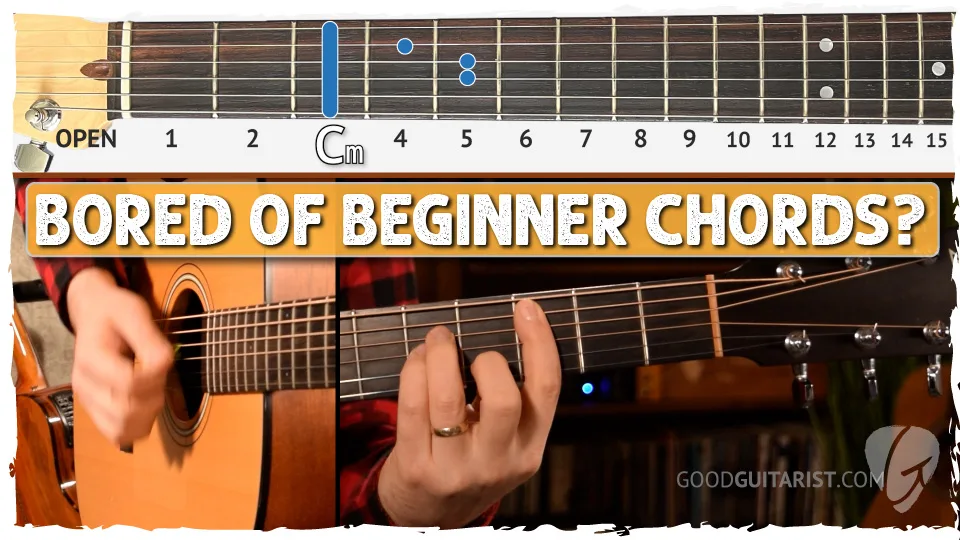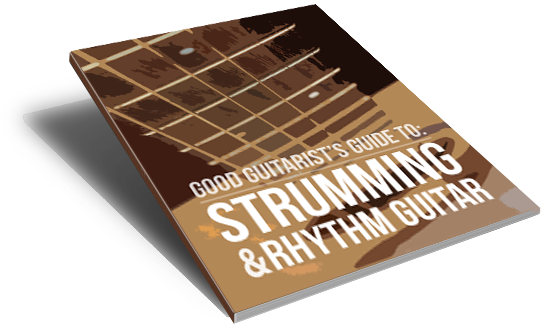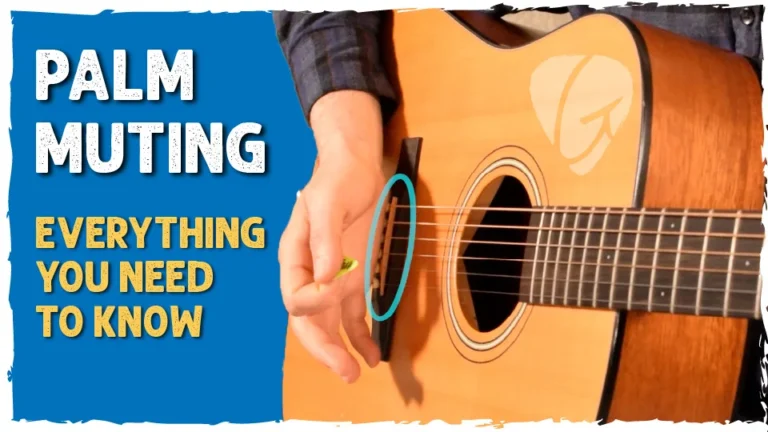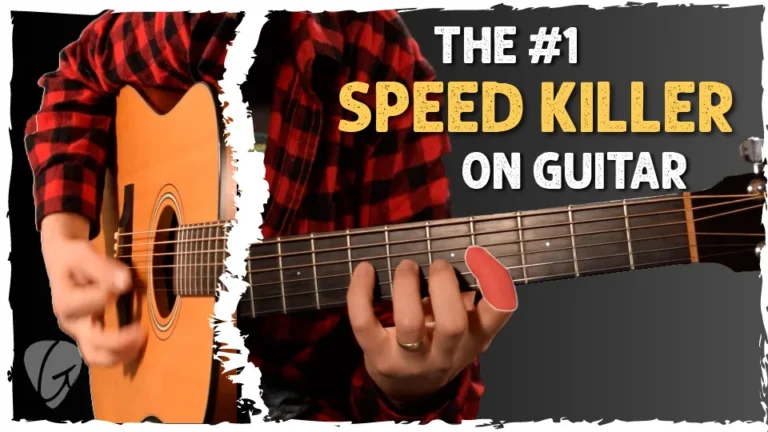The NEXT Chord Shapes You Should Learn AFTER the Beginner Ones
Ready to move beyond beginner chords? Learn the next most useful chord shapes to level up your guitar playing – bar chords, full key breakdowns, and more.
Good with the basic chords? Here’s what you should learn next.
Hey, it’s James here from GoodGuitarist.com, and today I want to talk about the next set of chord shapes you should learn once you’re comfortable with the basic ones.
And when I say comfortable, I don’t just mean being able to make the shapes. I mean being able to strum them, use them in songs, and switch between them pretty well. It doesn’t have to be perfect, but you should feel confident with your open chords.
Once you’ve got that down, you’re ready to move on to the next most useful chord shapes on guitar. Open chords are essential, no doubt, but these next ones come up often and will help you expand your playing in a big way.
We’re going to go key-by-key, so you can see exactly which chords are worth learning and why. This way, you’ll have a clear plan for what to work on next.
Review: The Essential Beginner Chords
Let’s quickly review the core beginner chords:
- C, A, G, E, D
These are the foundation of the fretboard.
And the minor versions of three of these are also super common:
- A minor, E minor, D minor
Some people also include F and B7 as beginner chords—I do too, sometimes—but we’ll set those aside for now.
Now, you might notice two big chords missing from that list:
C minor and G minor
That’s because they’re bar chords.
Understanding Bar Chords
Barre chords (or bar chords) are moveable shapes that let you play in any key. And I know they can be frustrating at first, but they’re worth it—I promise!
I have a ton of free bar chord lessons on YouTube, and if you want a full, structured approach, I also teach it inside The All-Access Pass. There’s a step-by-step method, so you don’t end up hurting your hand trying to muscle through it.
Let me show you how C minor works as a bar chord:
- Start with a C chord (the root is C)
- Apply the A minor shape to it, using your other fingers so your index can bar
- Now it’s a C minor chord!
Where does the A minor shape come from?
Well, if you play A minor using fingers 2, 3, and 4, your index is free. If you move that shape up, you need a bar to replace the open strings.
And if you know the notes on your A string, it becomes:
- A# (or Bb) minor
- B minor
- C minor
- C# minor
- D minor
… and so on.
That’s how we get C minor.
For G minor, we could go all the way up to the 10th fret using this shape, but it sounds pretty thin up there. So instead, we use the E minor shape on the low E string.
- Open = E minor
- 1st fret = F minor
- 2nd = F# minor
- 3rd = G minor
Same concept, just rooted on a different string.
Expanding Chords by Key
Let’s look at the full set of chords in each of the most common keys on guitar.
Key of C
C, Dm, Em, F, G, Am
(Easy F is fine for now)
Key of A
A, Bm, C#m, D, E, F#m
Bar chords needed:
- Bm = A minor shape up 2 frets
- C#m = up 2 more
- F#m = E minor shape up 2 frets
Knowing the notes on the A and E strings really helps here. I have lessons to help with that—check the links below the video.
Key of G
G, Am, Bm, C, D, Em
Tip: Practice switching between Bm and C—they show up together often.
Key of E
E, F#m, G#m, A, B, C#m
This key has a lot of bar chords.
- B major = A shape, up 2 frets
A lot of people struggle with the B bar chord at first, but it gets much easier with practice.
Key of D
D, Em, F#m, G, A, Bm
A great mix of open and bar chords here.
What’s Next?
Once you’ve tackled the chords in these 5 keys, the next logical step is learning the Key of F.
It’s a bit bar-heavy, but now that you understand how bar chords work, you’ll be able to figure it out more easily.
I know it might sound intimidating at first, but if you take it one shape at a time and work through the chords key-by-key, you’ll build a super strong foundation.
Final Thoughts
Learning guitar isn’t a race.
If you’ve been at it for a while and don’t feel like you’re as far along as you “should” be—don’t worry about it. I’ve been teaching for over 15 years, and I can tell you from experience: the students who stick with it are always the ones who succeed.
If you want to go deeper with this stuff, all my step-by-step courses are available inside The All-Access Pass. No more random YouTube rabbit holes—just a clear path to mastering guitar.
Have a fun time practicing and I’ll see you soon!
-James
All-Access Pass
Start your 10-day FREE trial
- Step-By-Step Courses
- Exclusive YouTube Bonuses
- Members-Only Community






